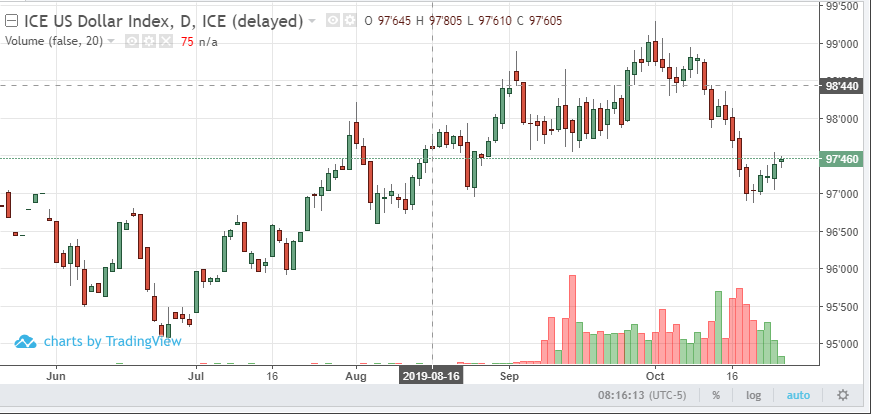
Currency futures were fighting for direction this week as back-and-fill action gripped the complex. The U.S. dollar marked a weekly low at 96.89 but was able to close every day above the pivotal 97 level. The recent correction in the dollar is attributed to the commencement of liquidity injection by the U.S. Fed. A pullback of this magnitude is expected after mild monetary easing, but a close under the 97 level would cause investors to take inventory and establish bearish momentum on the dollar chart. The FOMC is meeting again next week and is expected to cut the federal funds rate another 25 bps. According to the CME, the probability of a quarter point cut is over 90%. As the dollar broke down, foreign currencies have gained upside traction. The euro and the pound have had sizeable rallies, breaking through think channel resistance levels that have previously stopped their rallies all year long. After another delay in the Brexit process earlier this week, both currencies have taken a pause from their rallies. The euro appears to be forming a bull flag on the daily chart, which coincides with the bear flag forming in the USD. Should the greenback fight back to 98, and hold those levels, its correction should be short-lived, and the currency markets would return to “business as usual”. However, if the bear flag materializes, and we begin to see closes under the 97 handle, bullish strength would compound in foreign currencies and the euro could extend rallies back to 1.13.
All eyes will be on the Fed next Wednesday. Should they bring out the big guns in order to promote stock market strength, the dollar will fall through the floor. However, if they continue their trend of “less-than-dovish” rhetoric, the correction in the dollar could be over for the time being. Look for resistance back at the 98 level and be careful shorting the other currency markets. Aggressive traders can find success in these choppy waters, but passive investors must be weary of trend reversals that accompany easing monetary policy.



